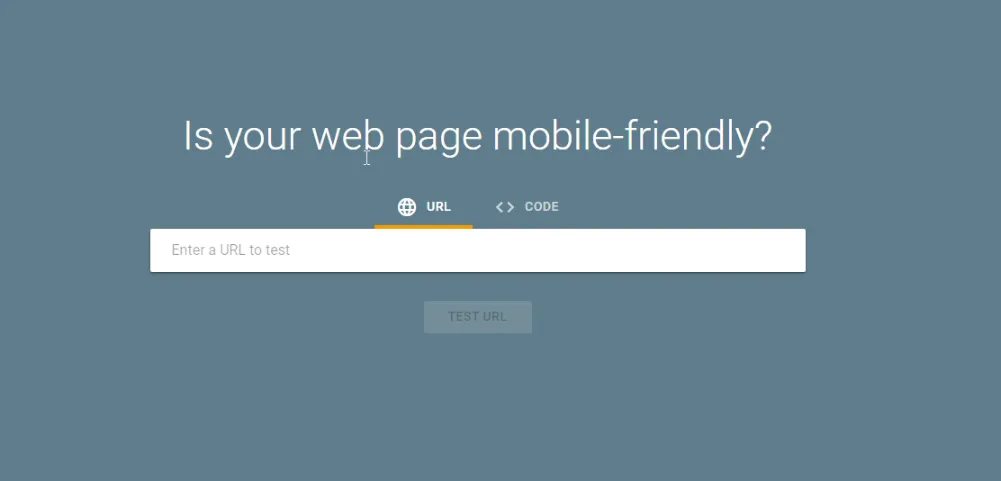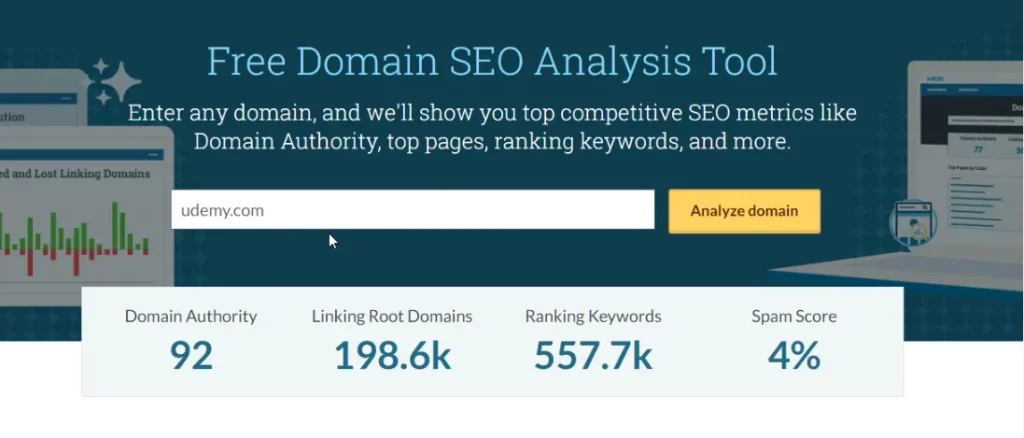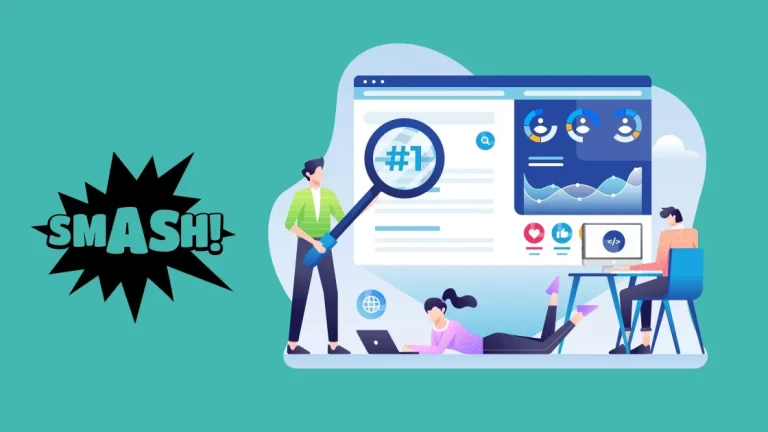Search engine optimization is improving your website’s ranking on search engines by making it more appealing and easy to find. It can be done in many ways, including structuring pages so that they load faster or adding keywords (keyword density) into relevant text for each page; this will help Google rank you higher than competitors who might have missed these important steps such as poor site navigation or unclear writing style. Search Engine Optimization(SEO), also called “on-site” optimization, refers specifically to activities undertaken within an enterprise web property. Still, other forms of Search Engine Optimization include off-site SEO practices like link building and social media marketing. In this blog post, we will discuss 29 tips that will help improve your website’s Search Engine Optimization.
Table of Contents
SEO Tip 01: Research Keywords
The first step in any Search Engine Optimization campaign is to research the right keywords for your business. You want to target relevant and high-traffic keywords, but you also don’t want to target too many keywords, or you will spread yourself too thin. Several different keyword research tools are available online, such as Google AdWords Keyword Tool and semrush.com, which can help you find the right keywords for your site.
Once you have identified a few target keywords, make sure they are included throughout your website, including in titles, meta descriptions, header tags (Htags), and within the content itself. Search engines only index the first 100-150 words of a web page, so you want to make sure that your most important keywords are included in this area.
SEO Tip 02: Make it Mobile Friendly

Approximately 50% of users now conduct searches on their mobile device rather than via desktop or laptop computer; therefore, if your website isn’t optimized for mobile devices, chances are people will leave your site before they even have an opportunity to see what products and services you offer. Google has begun rolling out new algorithms that factor mobile-friendliness into search results – websites with responsive designs (which automatically adjust based upon screen resolution) rank higher than sites without them. This means not all Search Engine Optimization practices previously used to improve ranking are effective anymore – you must now also make your website mobile-friendly.
SEO Tip 03: Optimize Page Load Speed
A slow-loading website can be extremely frustrating for users and will often result in them leaving before they even have a chance to see what you offer. Search engines take page load speed into account when ranking websites, so it is important to ensure that all of your pages load quickly. There are a number of ways to optimize page load speed, including reducing the size of images, using caching plugins, and optimizing your code. You can use Google’s PageSpeed Insights tool to test the loading time of specific pages on your website and receive suggestions on how to improve it.
SEO Tip 04: Optimize for Search Engines
One of the most important aspects of Search Engine Optimization is making sure your website is optimized for search engines. This includes using the right keywords throughout your site, adding titles and meta descriptions, formatting text properly, and ensuring that all links are working correctly. You can use Google’s Search Console to find out how well your website is performing in search results and receive suggestions on how to improve it.
SEO Tip 05: Add Social Media Buttons
Social media has become an increasingly important part of SEO, as it allows you to interact with potential customers directly and build relationships with them. Adding social media buttons to your website allows users to share your content easily on their social media profiles, which can help increase traffic to your site. There are a number of different social media platforms, so make sure you choose the ones that are most relevant to your business.
SEO Tip 06: Use Relevant Anchor Text
Anchor text is the text you use when linking to another page on your website. It is important to use relevant keywords as anchor text, as this will help improve your ranking for those keywords. You can use semrush Anchor Text Analyzer tool to find out how well you use keyword-rich anchors on your website.
SEO Tip 07: Add Blog Posts Regularly
Adding blog posts regularly helps keep your website fresh and up-to-date, which can improve your ranking in search results. Search engines like websites that are constantly being updated with new content, so adding blog posts on a regular basis can help you rank higher than competitors who don’t update their sites as often.
SEO Tip 08: Use Images and Videos
Adding images and videos to your website is a great way to engage users and keep them interested in what you have to offer. Search engines also like websites that include multimedia, as it makes them more appealing to users. You can use tools such as Google’s Search Console Video Annotation tool to find out how well your videos are performing in search results.
SEO Tip 09: Optimize for Local Searches
A growing number of people are using Search Engine Optimization to find local businesses, such as restaurants or plumbers. You can optimize your website for these types of searches by including location keywords in the title and meta description (such as “Los Angeles Plumber” instead of just “Plumber”), adding a Google My Business page with up-to-date information about your business, and ensuring that all phone numbers on your site lead directly to you.
SEO Tip 11: Keep Content Up To Date
Keeping pages updated is an important part of Search Engine Optimization because it keeps users engaged and interested in what you have to offer. Search engines reward websites that frequently add new content, so make sure you use tools like WordPress Post Scheduler to keep pages updated regularly. Search engines also like relevant, current content that matches the topic of a specific page, so make sure the topic doesn’t change too often.
SEO Tip 12: Use Social Media to Share Content
Social media is a great way to share your content with a broader audience. By sharing your blog posts and other website content on social media, you can reach more people who might not have otherwise seen it. You can use tools like Hootsuite or Buffer to help you manage your social media accounts and schedule posts for the future.
SEO Tip 13: Monitor Search Rankings
It’s essential to monitor your search rankings to see how well your SEO efforts are paying off. You can use several different tools to do this, such as semrush‘s Position Tracking tool or Google Analytics. This will help you track where you rank for specific keywords and see how your ranking changes over time.
SEO Tip 14: Use Competitor Analysis to Your Advantage
Competitor analysis is a great way to determine your competitors’ tactics to rank higher than you. By looking at their website, you can see what techniques they’re using that you might not use yourself. You can then use this information to improve your SEO efforts. semrush’s Competitive Intelligence tool can help you by providing detailed information about your competitor’s website, including organic search traffic, backlinks, and more.
SEO Tip 15: Optimize Pages for Mobile Devices
More and more people are accessing the internet from their mobile devices, so it’s important to ensure that your website is mobile-friendly. Search engines like Google give a ranking boost to websites that are optimized for all devices, so including keywords in the meta description and making sure pages load quickly can help you rank higher than competitors who haven’t taken this extra step.
SEO Tip 16: Use Internal Search Functionality
Using internal search functionality on your website can make it easier for users to find what they want. Including keywords (keyword density) in relevant places such as titles and headings will also help improve results from an internal search engine.
SEO Tip 17: Create Lists of Content Items
Lists provide a great way to organize related content into categories or topics, which makes it easier for users to find what they’re looking for. Search engines also like lists, so including keywords (keyword density) in titles or headings can help improve your rankings.
SEO Tip 18: Use Schema Markup
Schema markup is a way of telling search engine crawlers exactly how you want them to display certain types of content, such as events and products. This helps ensure that the information displayed on SERPs matches what people are searching for, increasing click-through rates because searchers have better results at their fingertips when it comes time to make purchases online. Search Engines will only use the schema markup if they understand it, so using proper grammar and punctuation is necessary. For example, “San Francisco, CA” instead of “San Francisco-CA.”
Semrush’s Search Integration tool can help you add schema markup to your website.
SEO Tip 19: Optimize for Mobile Search
Many people are now searching for businesses and products from their mobile devices, which means it’s important that your website is optimized for these queries. Search engines like Google give a ranking boost to websites that are optimized for all devices, so including keywords (keyword density) in the meta description and making sure pages load quickly can help improve results from a mobile search. This will ensure users have more relevant information at their fingertips when they’re looking specifically at smartphones or tablets. If you use WordPress as a CMS, try using Yoast SEO plugin to manage this for you.
SEO Tip 20: Use Search Engine Land’s Search Analytics
Search Engines like Google provide search analytics that can help give insight into what keywords people are using to find your website, how long they’re staying on your site once they’ve visited, and more. This is a great way to see if your SEO efforts are effective or not, so you know where to focus next. You can also use Search Engine Land’s Search Analytics tool as an alternative option which provides the same information in easy-to-understand graphs and charts.
SEO Tip 21: Participate in Social Media Channels
Social media is one of the most popular ways someone might decide whether or not to visit your website. If you’re not active on social media, you’re missing out on a huge opportunity to connect with potential customers. Make sure to post interesting and engaging content that will make people click through to your website.
SEO Tip 22: Use Quora for Keyword Research
Quora is a Q&A platform where people can ask questions about anything and get answers from experts in the field. This is a great place to do keyword research because you can see what topics are being talked about the most, as well as which keywords people are using when they ask these questions. You can also use this information to come up with new blog post ideas.
SEO Tip 23: Optimize Your Images
Images can help improve the user experience on your website, but they can also be a source of SEO value. When you upload images to your website, make sure to include keywords (keyword density) in the file name and fill out the alternate text field with a brief, keyword-rich description of the image. You can also use tools like Google’s Search by Image to find websites using your copyrighted images without permission.
SEO Tip 24: Publish Monthly Blog Posts
Blog posts are a great way to add fresh content to your website on a regular basis and keep people coming back for more. They’re also an essential part of SEO because they help you increase your site’s authority and relevance in search engine results pages (SERPs). It would help if you aimed to publish at least one blog post per month, but more is always better.
SEO Tip 25: Avoid Black Hat SEO Tactics
Black hat SEO techniques are methods that attempt to improve your website’s ranking in search engines through unethical or deceptive means. This includes things like keyword stuffing, link schemes, and cloaking. Search engines are getting better at detecting these tactics, so staying away from them is important to maintain a good ranking.
SEO Tip 26: Use Google Search Console
Google Search Console is a free tool provided by Google that gives you insights into how your website performs in search engine results pages (SERPs). It also provides information on how many impressions and clicks your site is getting and where you might improve so that more people will see it. Search Engine Land’s Search Analytics tool provides the same information in a format that’s easy to understand.
SEO Tip 27: Leverage Your Domain Authority

Domain authority refers to how well known and trusted. Popular your website is among search engines as measured by metrics like page rank (PR), MozRank, Inbound Links (IBLs), etc… This metric isn’t available publicly. Still, there are tools out there, such as Open Site Explorer or Ahrefs, which can give you this data. If you have a high domain authority score from these sites, then make sure to leverage it with SEO techniques like internal.
SEO Tip 28: Optimize for Mobile Devices
Since more and more people are using mobile devices to search the internet, it’s essential to make sure your website is optimized for them. This means ensuring that all of your content is easy to read and navigate on smaller screens and providing a good user experience (UX) by minimizing load times and including clear navigation elements. Search Engine Land has an infographic that can help you decide if your website is ready for mobile.
SEO Tip 29: Use the Keyword Planner
Google’s Keyword Planner tool provides users with keyword ideas, search volume data, and competition results to better decide which keywords to target in their SEO campaigns. Search engines use this information to determine how relevant pages are on your site when people search for specific terms or phrases. If you’re not using Google’s Keywords planner, now would be a great time to start!
Search Engine Optimization(SEO), also called “on-site” optimization, refers specifically to activities undertaken within an enterprise web property. On-site optimization techniques include optimizing your website’s title tags, meta descriptions, header tags, images, and other elements for search engines.
Conclusion
Search Engine Optimization is a process of improving your website’s ranking on search engines by making it more appealing and easy to find. Search engine optimization can be done in many ways, including structuring pages so that they load faster or adding keywords (keyword density) into relevant text for each page; this will help Google rank you higher than competitors who might have missed these important steps such as poor site navigation or unclear writing style. Search Engine Land provides tools like Search Analytics which give the same information in an easier-to-understand format. Social media is one of the most popular ways someone might decide whether or not to visit your website. If you’re not active on social media, you’re missing out on a huge opportunity to connect with potential customers.
What is search engine optimization?
Search engine optimization is the process of optimizing a website to improve its ranking on search engine results pages. It involves various techniques, such as structuring pages for faster loading, adding relevant keywords to text, and improving site navigation.
What are some ways to improve search engine optimization?
Some ways to improve search engine optimization include optimizing site structure for faster loading, adding relevant keywords to text, and improving site navigation. Off-site SEO practices like link building and social media marketing can also help improve a website’s SEO.
What is on-site optimization?
An on-site optimization is a specific form of search engine optimization that refers to activities undertaken within an enterprise web property to improve its ranking on search engine results pages. This includes optimizing site structure for faster loading, adding relevant keywords to text, and improving site navigation.
What are some off-site SEO practices?
Some off-site SEO practices include link-building and social media marketing. These practices involve promoting a website on external platforms to improve its visibility and reputation, which can in turn help improve its ranking on search engine results pages.
How can I improve my website’s SEO?
There are many ways to improve your website’s SEO, including optimizing site structure for faster loading, adding relevant keywords to text, improving site navigation, link building, and social media marketing. Implementing these techniques can help improve your website’s ranking on search engine results pages.



